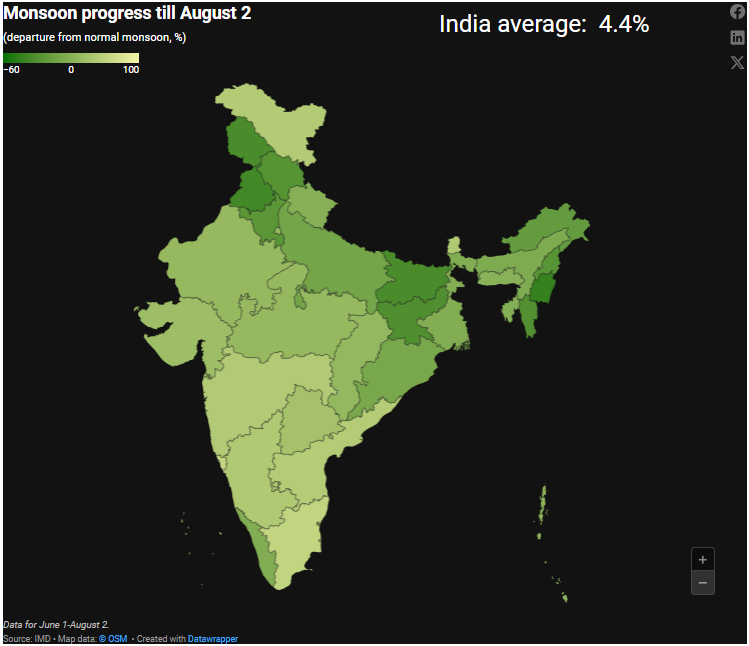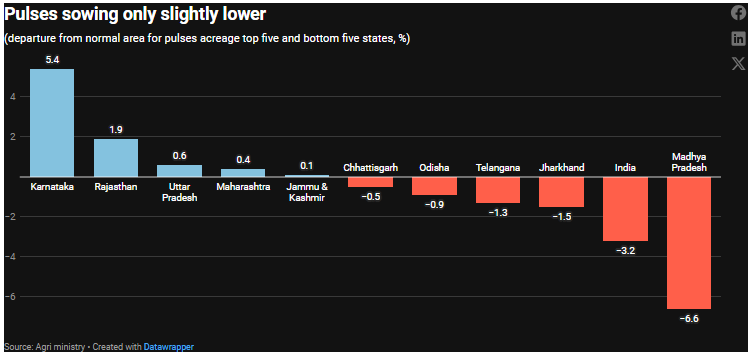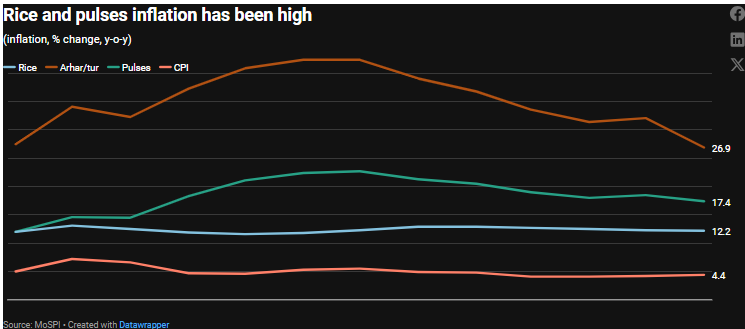Crop acreage as of August 2 was higher than the previous year, but analysis shows that a late pick-up to the monsoon has kept the overall sowing area in the kharif season 25 percent below normal (2018-23), according to data from the agriculture ministry.
Despite receiving surplus downpours for a fortnight, the varied spatial distribution of rainfall and low reservoir levels in certain states affects crop production, according to a Moneycontrol analysis.
A significant reason for this can be attributed to low reservoir levels in certain Northwest and Eastern states, which are witnessing deficient rainfall conditions.

For instance, data shows that the major rice-producing states of West Bengal and Bihar, with lowest reservoir levels compared to normal, had a 7.3 percent and 4.8 percent lower rice acreage.
West Bengal’s reservoir levels were operating 50 percent below their normal storage level on August 1, while Bihar saw a 67 percent deficit during this period.
Uttar Pradesh, with a 31 percent deficit in reservoir levels, witnessed a 5.5 percent drop in kharif rice sowing. Jharkhand and Odisha, which are also witnessing lower reservoir levels, recorded 3.4 percent and 2.2 percent lower sowing.
While the correlation with monsoon is not as strong as reservoir levels, data indicates that all these states also faced deficient rainfall conditions.

In the case of Bihar, rainfall was 34 percent below the long-period average, which is taken as normal, while for Jharkhand, the departure was 31 percent below normal.
Rice acreage for the country was 25.7 percent below normal as on August 2, with a third of the states witnessing a drop in acreage from normal.
Rice inflation has remained in double digits for nearly two years and has stayed above 12 percent since the start of 2024. In June, it was flat at 12.2 percent.
But there is good news for the country on the front of the pulse, as total kharif acreage was just 3 percent below normal, while oilseeds sowing was 12.9 percent higher.
In the case of pulses, the increase was led by Karnataka with 5.7 percent higher acreage, and Rajasthan with 1.9 percent more are under cultivation. Karnataka has received 36 percent more rainfall than the long-period average, with reservoir levels 32 percent higher than normal. In Rajasthan, although the reservoir levels were a third below normal, rainfall was 12 percent higher.

Pulses inflation has been a cause of concern for the government. In June, pulses and products witnessed a 17.4 percent inflation. Within pulses, tur inflation was higher a 26.9 percent in June. Tur’s area under cultivation was up 1.8 percent as of August 2, which is likely to provide some reprieve from October onwards. Compared with the previous year, tur acreage was up 8.6 percent.

Source: Money Control





